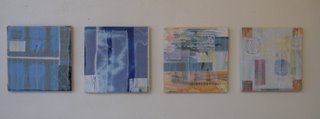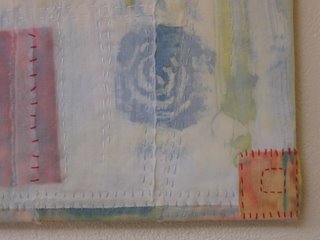A new sort of gazing-house
from your shop and your house
to the cemetery,
you’ll hear me hailing you from inside
the open grave, and you’ll realize
how we’ve always been together.
I am the clear consciousness-core
of your being, the same in
ecstasy as in self-hating fatigue.
...don’t look for me in human shape.
I am inside your looking. No room
for form with love this strong.
...No need to wait until we die!
There’s more to want here than money
and being famous and bites of roasted meat.
Now, what shall we call this new sort of gazing-house
that has opened in our town where people sit
quietly and pour out their glancing
like light, like answering?
Rumi, in ‘The Essential Rumi’, trs. Barks and Moyne
Last night in satsang with Pamela, someone said he finds himself wondering mid-sentence what is happening. He said it differently, but I think he was pointing to the gazing-house. I find myself less and less inclined to engage in conversations of the sort that once sustained me, as if the silence of answering is of more interest than the words of questioning.
A friend tells me that we are a culture of language. She says language apparently arose from the rhythms of music. We speculate that our speaking is more about rhythm than the words. Perhaps we are like birds enjoying the sounds they send out from their bodies with less attachment to meaning than most Westernized humans can imagine.
Another friend who recently received a Tibetan teaching on dying reports the teacher said, “Dementia is a purification.”
I have come to a new peace in the last days in which I find myself celebrating my life. “I could die a happy woman,” I report to friends. “When I review the experiences of this life, I celebrate the fullness.” This sense of background satisfaction catches me by surprise.
I can’t point to any one thing that brought the turning toward this understanding, but one event does stick in my mind as being of particular help, and that is watching the Dutch film ‘Antonia’s Line’. It is a story of a woman celebrating her life on the day she is to die. A simple use of flashback. What strikes me is the celebratory quality of the story, the sense of fullness within quirky and spontaneous responses to the situations of life.
The mind panics a bit--what shall I talk about if I have nothing to fix or right or resist? I’ve never been one to enjoy gazing into the eyes of others for long. I’m like the cats--a bit of a receptive gaze is plenty. Being in silence is very comfortable, but I prefer the side by side posture with my looking to the world.
Or better yet, the rhythm of easy doing things together--cooking, stitching, gardening, trying to put words to paper. In my gazing house, there would be long sheets of paper and colored pens, pencils, paints to use, and an on-going poem, and cloth and thread. And, there would be a few rooms for naps, and a noisy kitchen with a long table, and another room for dancing and music-making, and a sensuous place to retire to for love-making. This is what Antonia created in her life, and I believe she died a happy woman.



















